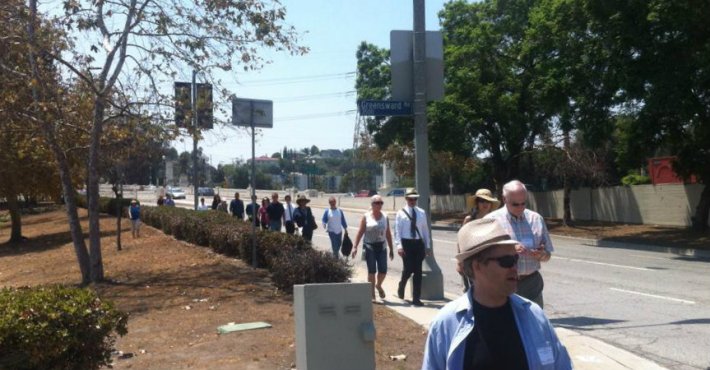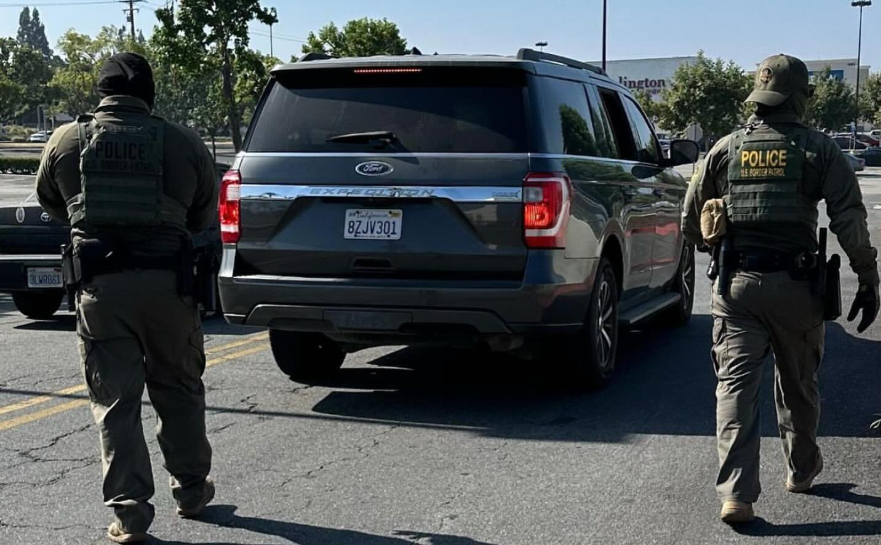
There has been quite a bit of proverbial water under the Glendale-Hyperion Bridge. Under a great deal of community displeasure in 2013, the city of Los Angeles set aside an outdated bridge retrofit plan and formed an advisory committee to decide the future of the historic span.
The 9-member Glendale-Hyperion Viaduct Improvement Project Community Advisory Committee is a broad cross-section of the local communities. It includes representatives from nearby elected city bodies: the Atwater Village Neighborhood Council, Los Feliz Neighborhood Council, and the Silver Lake Neighborhood Council. Rounding it out are folks representing historic preservation, parents from local schools, and concerned non-profits: Friends of the L.A. River, the L.A. County Bicycle Coalition, L.A. Walks, and the Los Feliz Improvement Association.
The committee has been meeting roughly every other month since December 2013. It reviewed design options and technical studies, and discussed how the bridge could best serve the diverse future transportation needs of all adjacent neighborhoods. The available technical studies focus on delays to car traffic, with no thorough evaluation of safety, health, or environmental outcomes. Even using these stacked-deck car-centric studies, bridge bike lanes and sidewalks not only appear feasible, but perform better than the existing bridge configuration.
At the committee's final meeting on August 7, they were unable to come to a full consensus on a final recommendation for the configuration of the bridge.
So, as folks do in democracies, they took a vote.
The final vote was 6 to 3 in favor of the "Option 3" road diet configuration. Option 3 reduces one car travel lane, resulting in three car lanes (one northbound, two southbound), two bike lanes, and sidewalks on both sides of the bridge. The Community Advisory Committee completed their task; their advice to the city is to include two sidewalks and two bike lanes on the new bridge.
Option 3 is a compromise.
Drivers would get only three of the four lanes they have become accustomed to. Cyclists would not get any physical protection between their lane and adjacent fast-moving cars. Pedestrians would get basic sidewalks on both sides of the street, but are still pushing for a crosswalk at the base of the bridge. The crosswalk (which should be feasible, if coordinated with the adjacent traffic signal at Glenfeliz Boulevard) is currently not in the final plans, due to projected minor delays to drivers.
Now the final bridge configuration decision rests in the hands of the city's elected officials: Mayor Eric Garcetti and City Councilmembers Tom LaBonge and Mitch O'Farrell.
All three appeared in this 2013 video promoting the project. While there's no official word on where these electeds stand, it appears that O'Farrell and Garcetti have been amenable to L.A. growing gradually into a balanced multi-modal future. On the other hand, LaBonge seems somewhat skeptical. Though he is a bicyclist, Councilmember LaBonge refers to Hyperion Boulevard as a truck route to justify a four-lane configuration. The bridge carries and will continue to carry truck traffic, but is neither on city [pdf] nor state [pdf] truck route maps.
This decision is a far-reaching one. Glendale-Hyperion Bridge has stood and served for 87 years. It was the city's first million-dollar bridge, a huge investment in a growing city's dreams of a modern future. Though the sidewalks were narrowed, the bridge looks pretty much like it did when it was completed in 1927. These bridges last for many years, so this decision is important for current users as well as generations who haven't been born yet.
It's up to you, honorable representatives LaBonge, O'Farrell, and Garcetti.
By a two to one margin, the Community Advisory Committee recommended adding bicycle lanes and maintaining both sidewalks. Streetsblog encourages you all to respect the vote of the committee that you established. Respecting the committee's decision respects the surrounding communities that they represent. It builds trust in the city's public processes. Best of all it will result in a bridge that everyone can take pride in.






